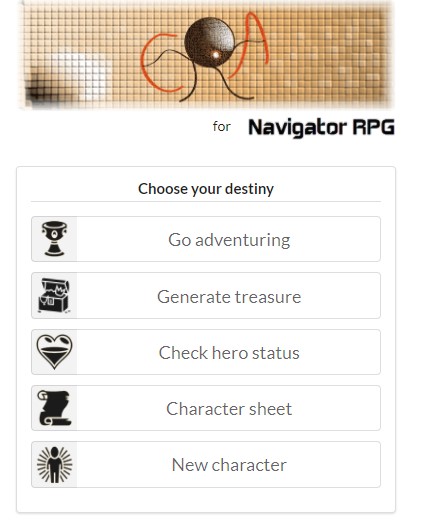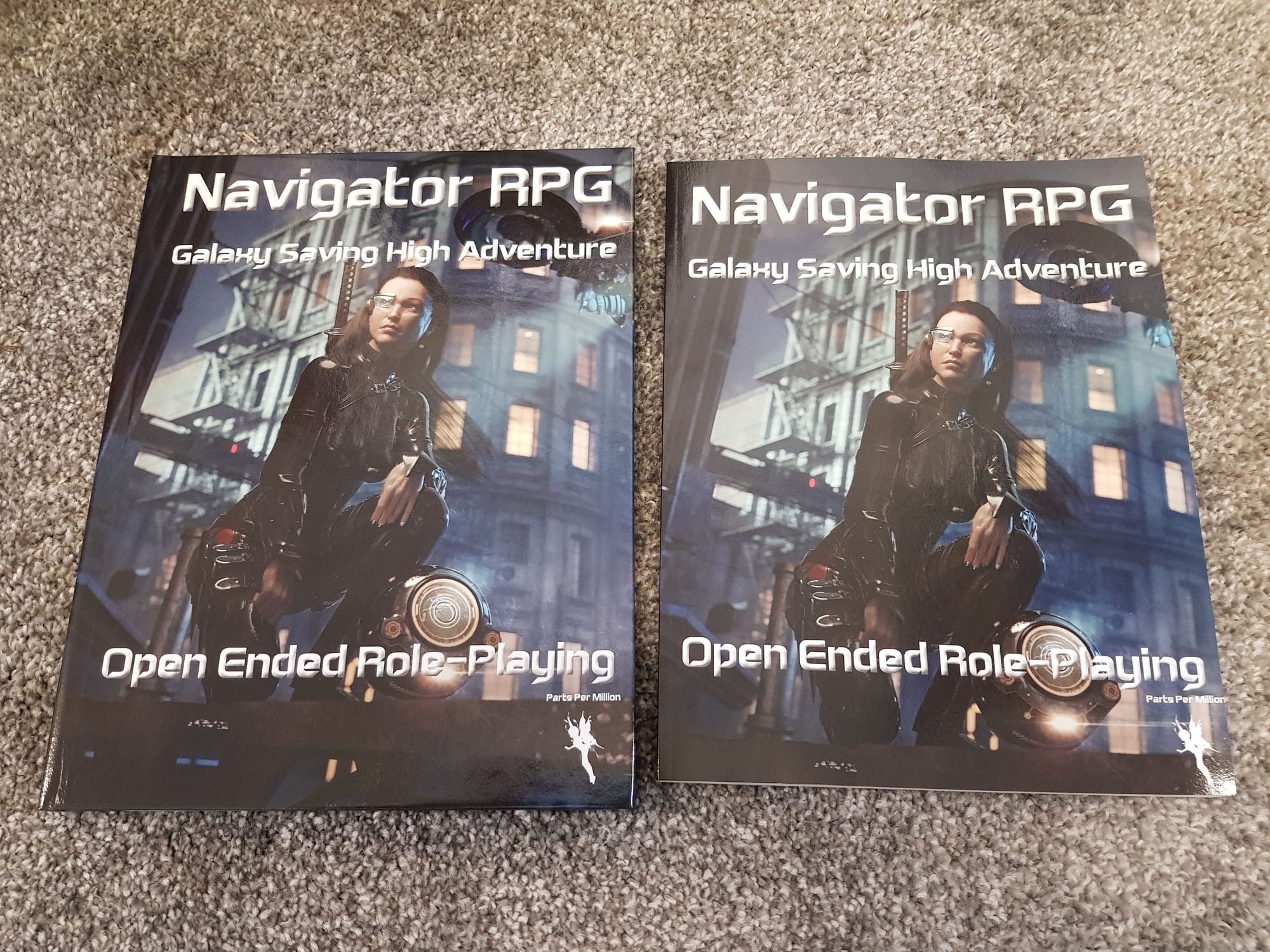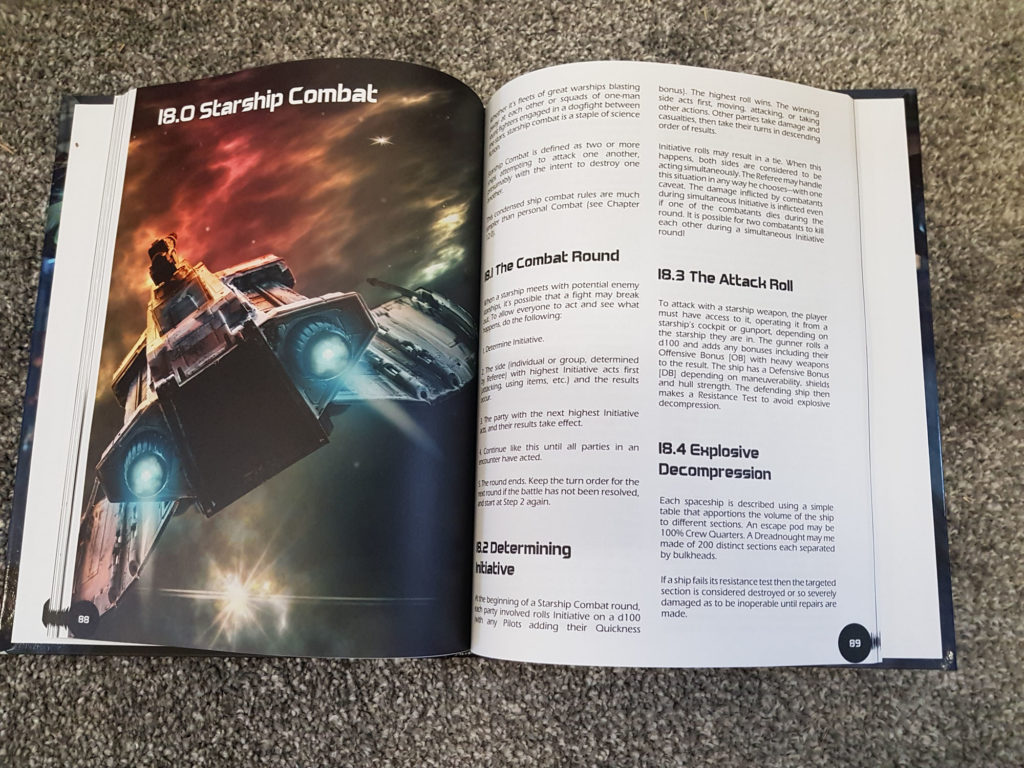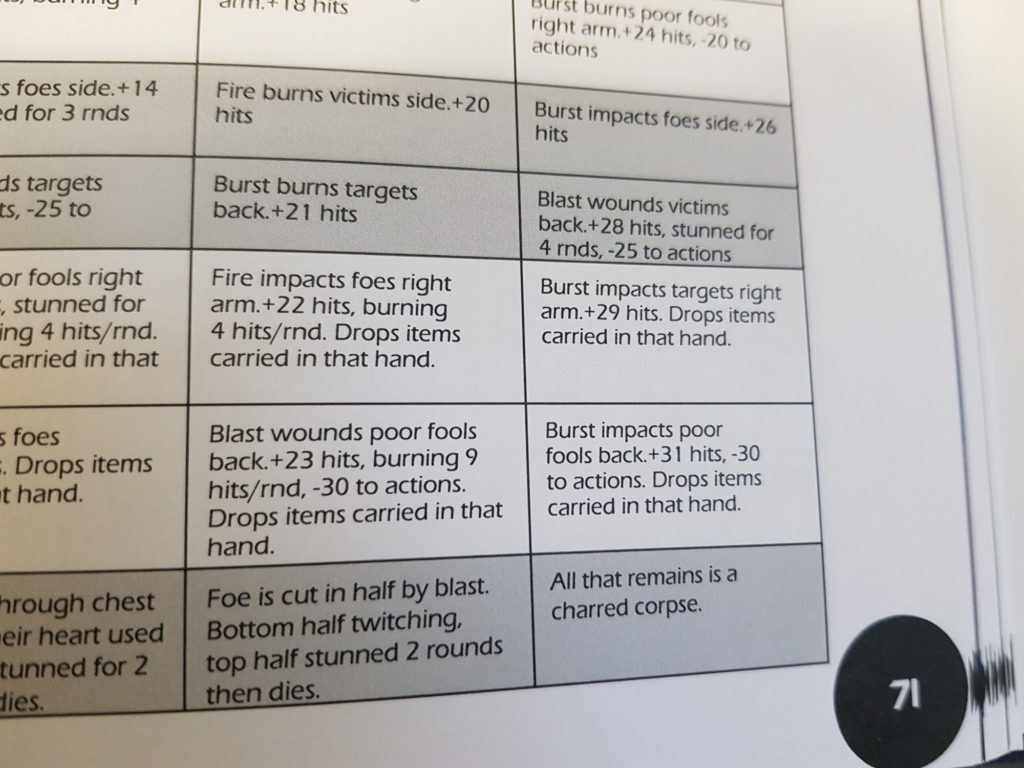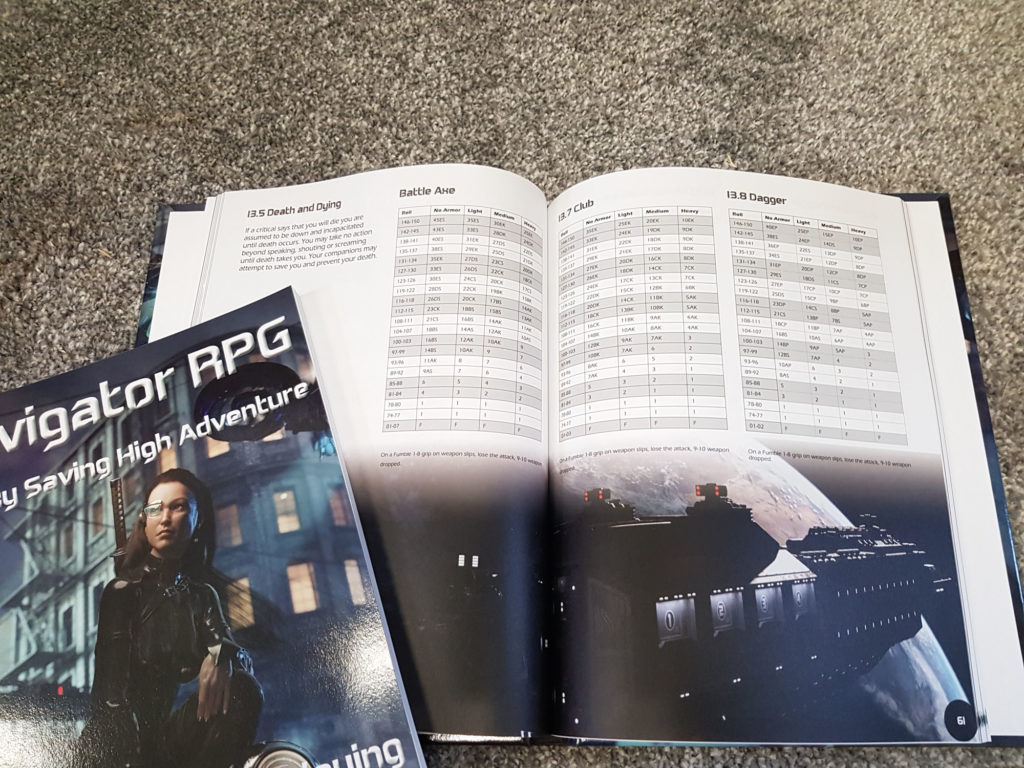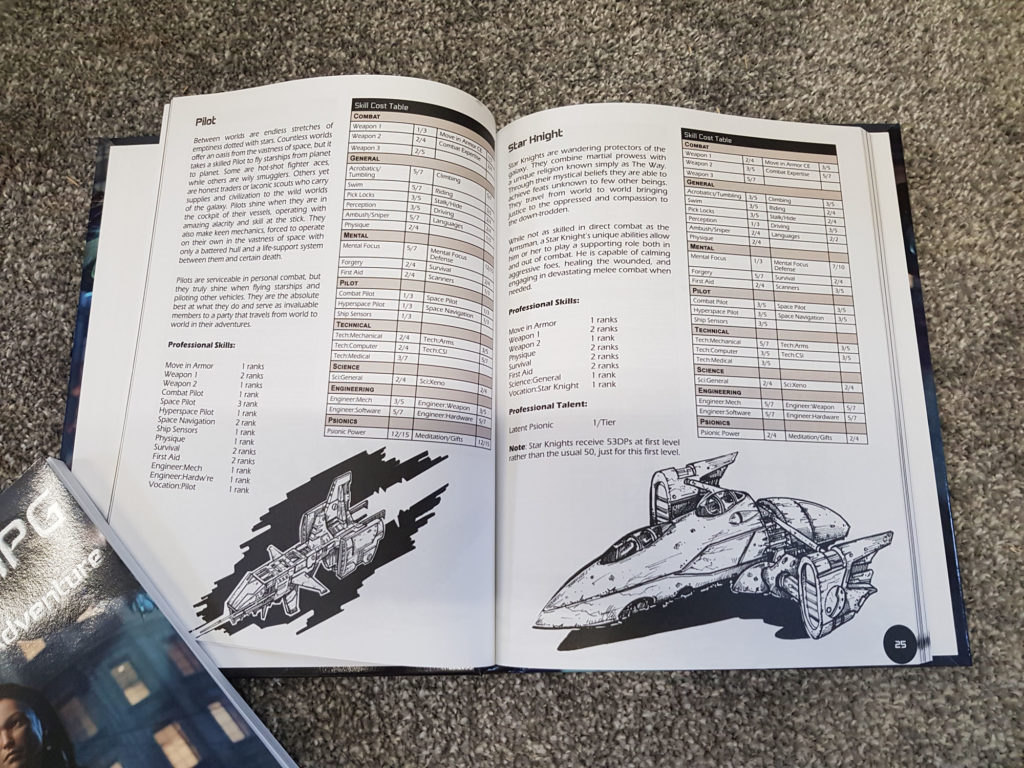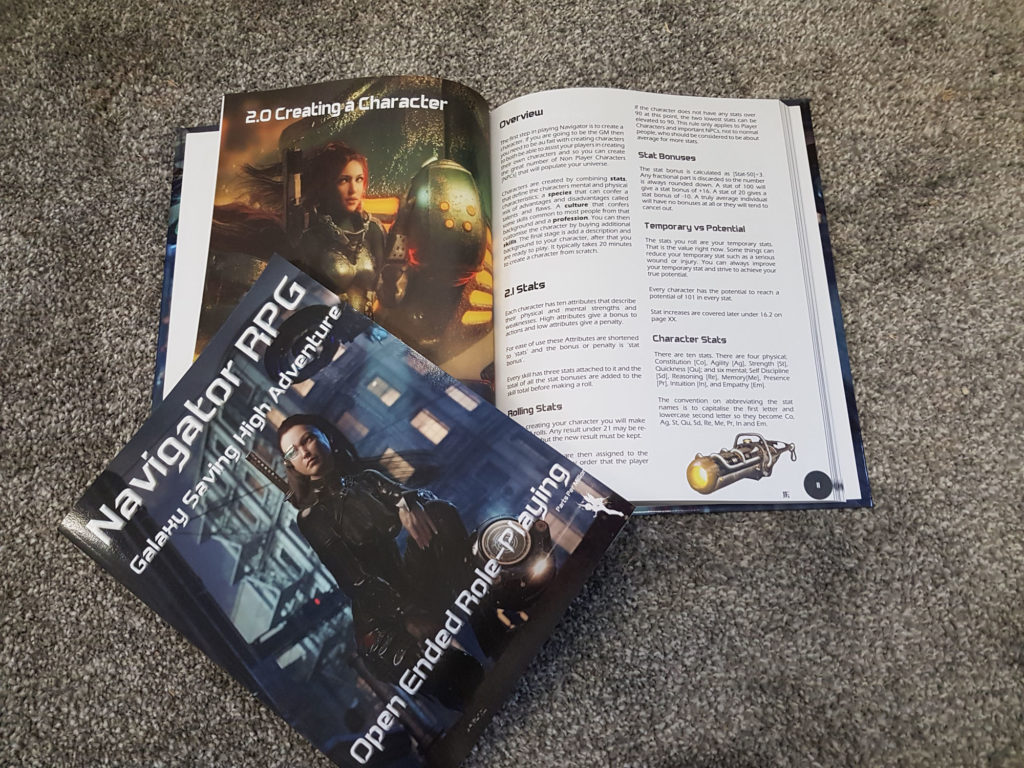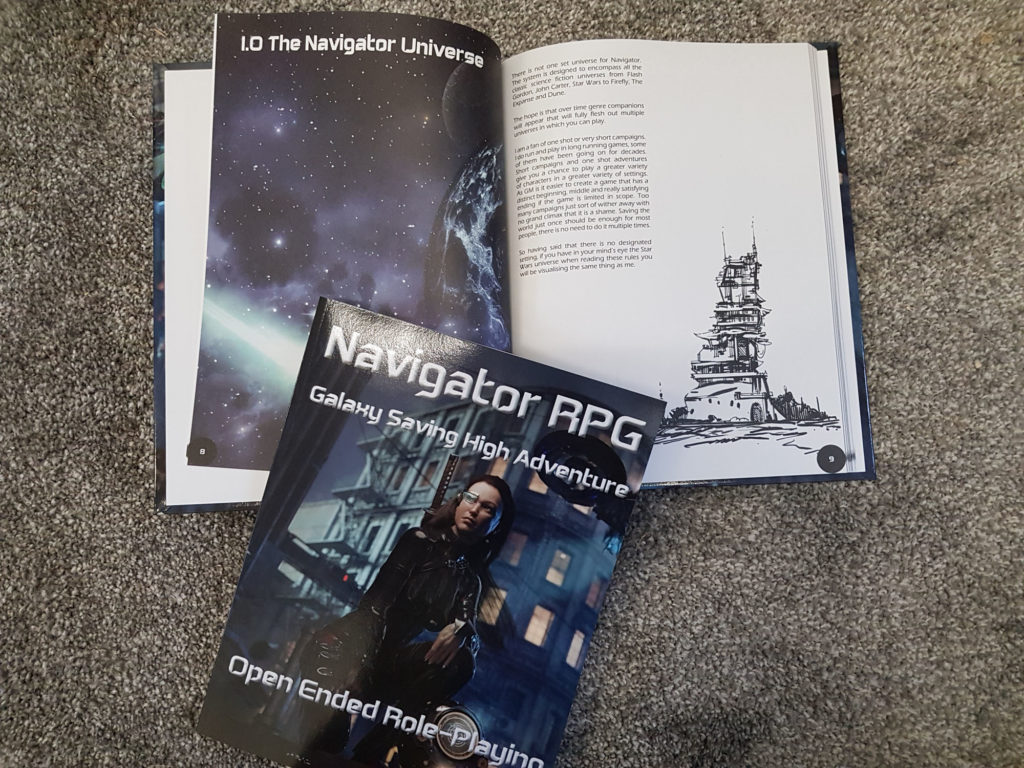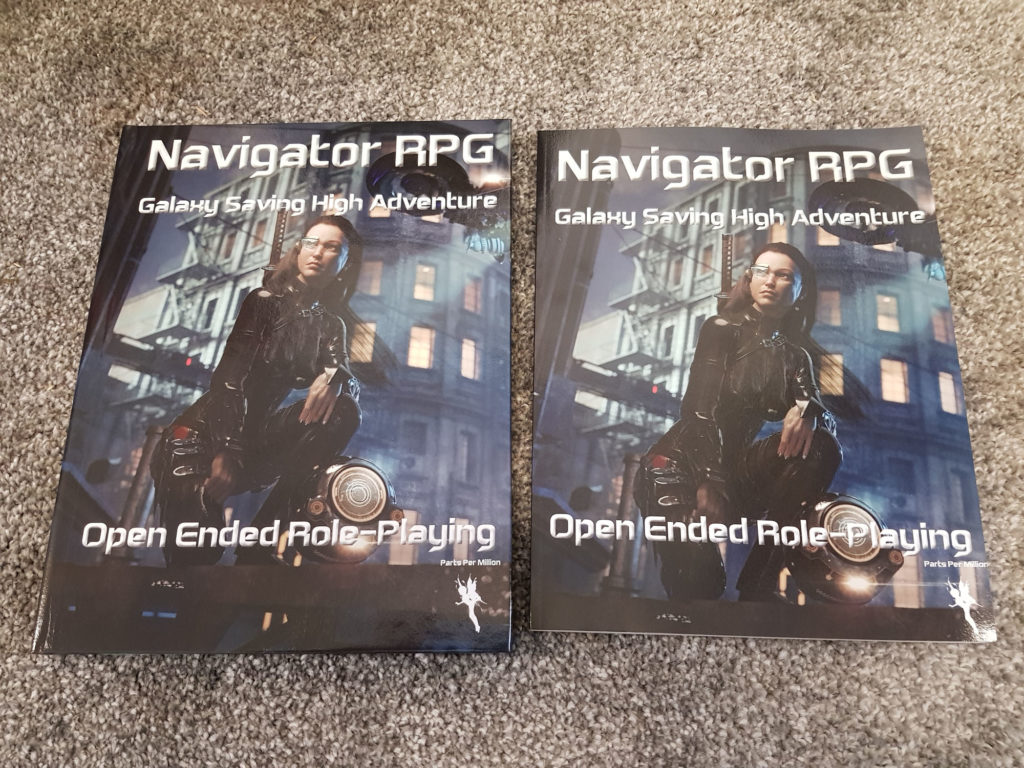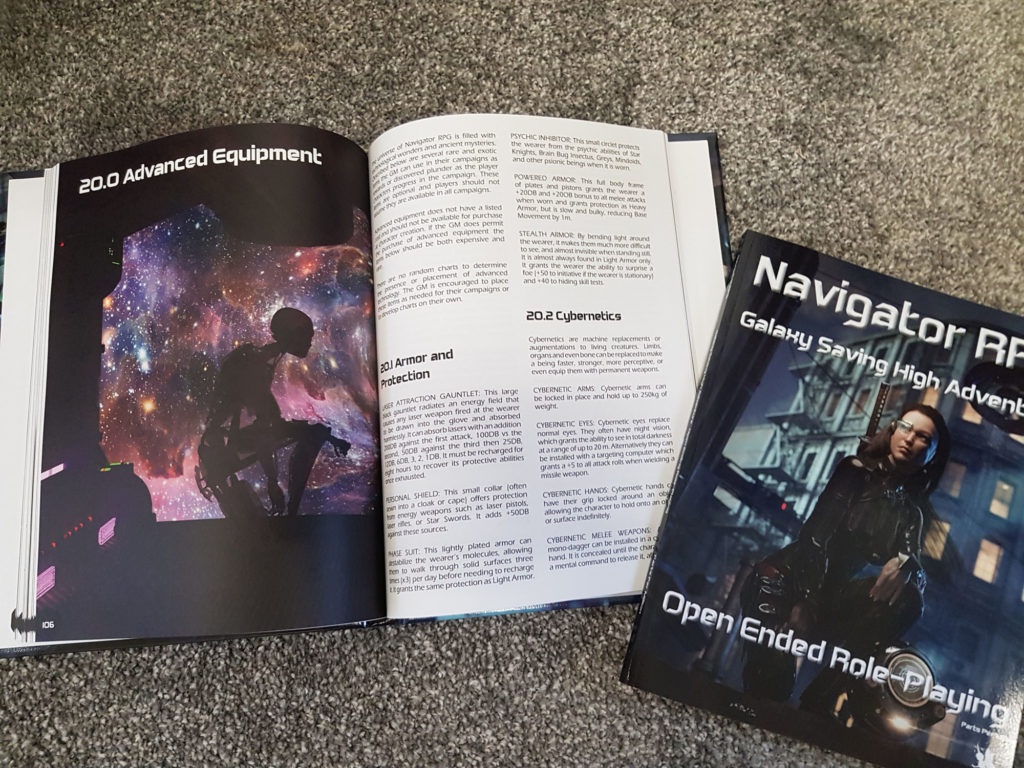In part I of this series, I explained how the first editions of Rolemaster initially tried to fit wrestling into their normal attack paradigm. They used specific attack charts (Sweeps & Throws, Grappling), which were tied to specific critical charts (Sweeps & Throws, Grappling); and they also offered a non-lethal option by capping results at 105 if you wanted to pull your punches (or grapples as the case may be). The main problem with this approach was that it forced would-be grapplers to choose between being bad wrestlers (since even a maximum result at 105 on the attack chart was unlikely to immobilize an opponent) or good murderers (since the higher results often ended in serious injury or death). In an attempt to solve these problems, the RM2 Companions and RMSS/FRP offered options that mixed different attack charts (Grapple, Sweeps, even Striking) with the different critical charts (Grappling, Sweeps, Unbalancing) almost interchangeably. The Companions and RMSS/FRP also added more skills, such that RMSS had separate skills for Sweeps and Throws; Tackling; Wrestling; and Blocking. But all this really did was introduce skill bloat. In RMSS, you literally had to switch skills three times (from Blocking to Tackling to Wrestling) if you wanted to stop an opponent from running past you and take him to the ground. And RMSS/FRP never solved the problem of the grappler’s Hobson’s Choice between bad wrestling and good murdering.
The final result, then, was still rather unrealistic. I wrestle with my 5-year-old son pretty much every day, but if I used the RM2 or RMSS grappling rules to do this, I would either be very bad at catching him (an attack table result of 105 is unlikely to give me a good grip on him, unless I get lucky with my critical roll), or I would have outright killed him years ago. But in reality I can catch him pretty easily, and the worst injury I have ever given him was a small red mark on his temple due to the fact that I had not cut my fingernails closely enough that day. The earlier editions of Rolemaster never gave me a system that allows me to wrestle him effectively without risking murdering him.
So what’s the solution? The new edition of Rolemaster gives us with some very useful new tools, and I think we can add to them a few ideas from Dungeons & Dragons. Together, I think these finally solve the problem of grappling.
RMU offers us a new system closely tied to earlier editions of Rolemaster. There is still a Grappling table and a Sweeps Throws table, and both still have their own distinct critical tables. But there are also clearer rules for subduing attacks, as well as a Subdual critical table (I think that is an RMSS innovation?). There is also a Wrestling skill, which is a specialization of the Unarmed skill, right alongside Martial Arts Strikes and Sweeps & Throws, where I think it fits well. But thankfully there are no separate ‘Athletic Games’ or ‘Tackling’ or ‘Blocking’ skills to bloat the RMU skill list.
But perhaps the most important change RMU makes is the reworking of the Grappling critical chart. It now includes numerical ‘Grapple %’ results alongside its descriptions of other effects. The Grapple% is a penalty that applies to all the target’s actions so long as it remains grappled. This penalty represents how good a grip/lock the grappler has on her opponent. So when attacked by a grappler who obtains a critical against you, you might suffer a result of ‘30% Grapple’, which means you are at -30 until you break that grapple. Breaking the Grapple is a 4 AP or full-round action, and you can use the Wrestling, Contortions, ‘or other appropriate grappling skill’ to perform it. The amount you roll over 100 is the amount by which you reduce your Grapple% penalty.
So far, so good. The discussion on the forums in recent weeks focused on an apparent oversight in the RMU rules about moving while grappled. In the RMU Rules As Written (RAW), any grapple% result stops all movement for the grappler and the grapplee until the hold is broken. This is a bit of a problem, because it means a Halfing gaining the slightest Grapple% (5%) on a Troll could rather easily stop him from moving altogether. Forum posters suggested various ways of solving this. My own suggestion was to add a stipulation that a grappled target takes on the added encumbrance (including body weight) of his/her grappler. This would mean that the Troll could rather easily drag the Halfling around, but a Halfling grabbed by a Troll would be more or less completely immobilized. In commenting on my suggestion, JDale coined our new RMU slogan — ‘That’s reasonable’ — so I am hoping this might be the solution the developers adopt.
Overall, I like the innovation of adding a grappling % to the critical results, and I think it is one of the keys to improving grappling, but I feel RMU still lacks a two things, namely:
–A controlled, consistently nonlethal Grappling option. In reality, as opposed to the RM grappling rules, a champion wrestler is able to put you where he wants you, and keep you there. That control is to me the very essence of wrestling. But this also means a champion is not going to hurt you inadvertently. Yet, the RMU Grappling attack table still inflicts concussion hit damage (even if it is low), and the RMU Grappling critical chart still causes broken bones, severe injuries, and death on even B criticals. So I still can’t wrestle my son within the RMU Rules As Written. I still have to choose between having less control than I do in reality, or being less effective than I am in reality.
–More standardized maneuvers with specific AP costs, such as ‘takedown/tackle’, so I don’t have to constantly houserule common maneuvers. RMU has thankfully done away with the skill bloat that gave us separate skills for Blocking, Tackling, Wrestling, and Athletic Games. We can now just use Wrestling for all these, and treat Blocking and Tackling as Wrestling maneuvers. But to do that easily, we still need exact AP costs and some basic guidance as to how to handle these as maneuvers.
Dungeons & Dragons offers some ideas for how we can solve these last remaining problems. Why bother with D&D? Well, D&D has a system that is in some ways simpler and better at capturing nonlethal grappling (for a good breakdown, see: https://www.enworld.org/threads/the-grapplers-manual-2-0-grappling-in-5th-edition.468737/ ). D&D is also by far the most heavily played and playtested system in the world, which means that there is a good chance your players are already familiar with it, and there are some lessons we can learn from the vast amount of feedback it has accumulated. The relevant aspects of the D&D system are these:
–Grappling is resolved by an opposed skill check (attacker’s Athletics skill vs. defender’s Athletics or Acrobatics skill) rather than a regular attack. Grappling therefore never does hit point damage. Its primary effect is to impose the ‘Grappled’ condition, which reduces the target’s speed to 0.
–Characters can make additional moves beyond the initial grabbing, most notably tackling/takedowns (the ‘Shove’ action).
–Size limits grappling. You can’t grapple a creature more than 1 size larger than you. And you can’t drag a creature you’ve grappled if it weighs more than your carrying capacity.
D&D thus offers quite a lot, namely: a controlled, nonlethal mechanic for resolving Grappling attacks (i.e. using skill checks rather than attack charts); clear rules for takedowns; and a detailed explanation of how size affects grappling.
In my third and final part of this trilogy of blogs, I’ll give specific rules for how similar measures can be implemented to improve grappling in RMU.

